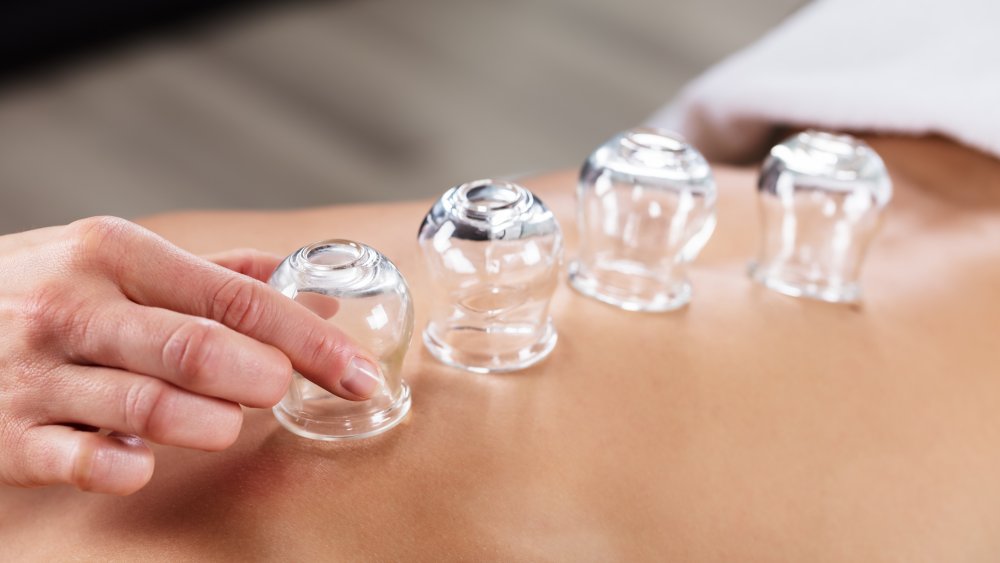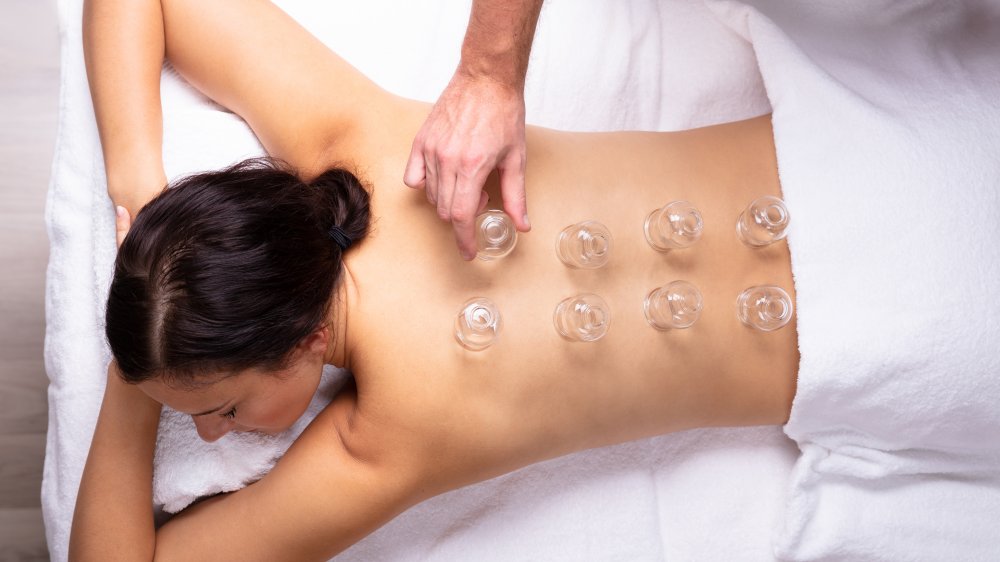What Is Cupping Therapy And Does It Actually Work?
You've probably heard of cupping therapy, or at least seen the results of it in the form of large circular bruises. Can something that looks like it ends in such a painful result really be helpful?
Cupping therapy is an ancient practice from Egypt, China, and the Middle East. The healing method is a form of alternative medicine in which special suction cups are placed on the skin. It's thought to help ease pain, inflammation, induce greater blood flow, and help with general relaxation. It can also be classified as a kind of deep-tissue massage (via WebMD).
A cupping session typically consists of lighting a glass cup on fire for a moment and then putting the warm glass on the skin to create the suction effect. After a few moments, the skin is pulled into the cup by the sucking action and causes bruises as the blood vessels expand. The redness and bruising typically lasts for about 10 days.
To many of us, the whole thing sounds sort of frightening, but many laud cupping therapy's relaxation affect and health benefits.
Cupping therapy has multiple benefits
Cupping practitioners believe that a sluggish qi (chi) and blood system manifests as pain and disease. They claim that cupping activates the circulation of qi and blood, which in turn relieves swelling, pain, and tension. From a modern Western medical perspective, cupping offers benefits by loosening connective tissues and increasing blood flow. It also relaxes tissues and improves cell-to-cell communication (via Medicine Net). Modern and ancient medicine both agree that there are benefits, but whether they are related to qi or Western science is up for debate.
In general, it seems that there is some evidence to suggest that cupping therapy can be beneficial. However, many researchers argue that there is a need for more studies to fully understand how and if cupping works (via Medical News Today).
Next time you have some aches and pain that traditional medicine isn't helping with, it might be time to consider looking up a cupping practitioner near you.

